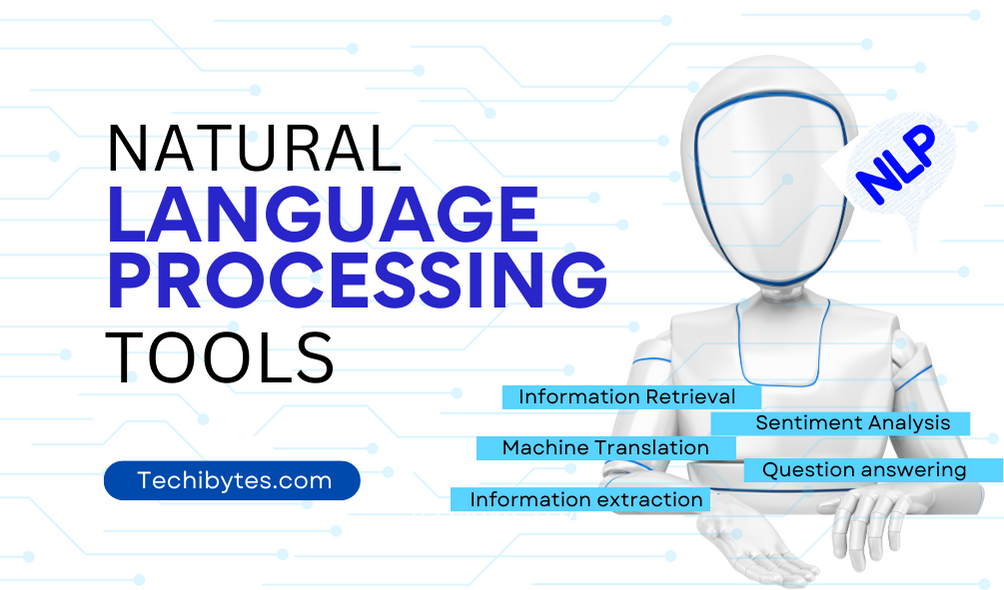Tools for processing and analyzing human language data are called Natural Language Processing (NLP) tools for professionals. Using these technologies to extract insights, sentiment, entities, and relationships from text helps professionals make better decisions, automate processes, and comprehend vast amounts of textual data.
Are you looking for the best natural language processing tools for professionals? Keep reading?
Table of Contents
WHAT IS NATURAL LANGUAGE PROCESSING TOOLS?
The field of computer science known as “natural language processing” (NLP) is more particularly the field of “artificial intelligence” (AI) that is concerned with providing computers the ability to comprehend spoken and written words like that of humans.
Statistical, machine learning and deep learning models are all combined in computational linguistics, which models human language using rules. Together, these technologies provide computers the ability to comprehend human language in the form of text or voice data and to fully “understand” the meaning of the text or speech, including the speaker’s or writer’s intention and sentiment.
12 NATURAL LANGUAGE PROCESSING TOOLS FOR PROFESSIONALS
1. NLTK
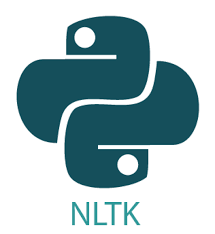
An open-source Python package called Natural Language Toolkit, or NLTK, offers fully functional tools. It offers a wide range of capabilities, practically everything a developer needs to work with natural language, including tokenization, stemming, tagging, categorization, a bag of words, etc.
As a result, integrating with different frameworks may need more effort. It was developed to aid in natural language processing instruction and research.
KEY FEATURES OF NLTK
- For various NLP applications and studies, NLTK offers access to lexical resources and linguistic datasets (corpora).
- As a crucial first step in many NLP applications, NLTK provides tools for breaking text into words, sentences, or other meaningful units.
- It includes modules to tag words in a sentence with their part of speech (such as noun, verb, or adjective).
- To analyze sentence structure, NLTK supports parsing methods.
- NER involves the problem of finding and classifying named entities (such as names of individuals, organizations, and locations) in text, and NLTK provides tools for this.
- Machine learning methods can be included using NLTK for tasks like text categorization and clustering.
- Building and assessing text classification models is made simpler by NLTK’s support for classification algorithms.
- Building processing pipelines for diverse NLP jobs is made more accessible by NLTK, making it simple to mix multiple elements.
- The toolkit provides tools for language data visualization, which might help comprehend the linguistic characteristics of text.
2. SPACY
SpaCy is a complementary open-source Python library with enhanced capabilities and models. SpaCy is one of the best natural language processing tools that only provides the best tools available compared to its competitors to save developers time and confusion, unlike NLTK, which offers an extensive array of tools.
Additionally, SpaCy supports text stored as objects, making it more straightforward to interact with other frameworks.
KEY FEATURES OF SPACY
- With the help of robust tokenization and part-of-speech tagging features offered by spaCy, you may process and analyze text down to the level of individual words and their grammatical characteristics.
- It has built-in features for finding identified entities in text, including people, companies, places, and more.
- By effectively extracting the syntactic structure and connections between words in a phrase, spaCy accomplishes dependency parsing.
- Lemmatization, which reduces words to their root or primary forms to aid analysis, is a service provided by the library.
- For many NLP jobs, it is essential to segment text into sentences, which spaCy can do reliably.
- Users can develop unique NLP pipelines by designing and mixing their own processing components or altering preexisting ones.
- With the help of pre-trained word embeddings, spaCy enables the usage of word vectors in similarity tests and other tasks.
3. CORE NLP
It is a Java-based open-source toolkit used for automatic date, time, and numeric decoding, as well as named entity recognition, tokenization, and parts of speech tagging. It has many characteristics with NLTK and offers APIs for languages other than Java.
Scalability is a one of the best natural language processing tools, as textual data is processed more quickly. CoreNLP provides statistical, deep learning, and rule-based NLP features, which are helpful for academic research.
KEY FEATURES OF CORE NLP
- To improve comprehension and coherence in text analysis, it finds and links items that relate to the same real-world entity throughout a page.
- CoreNLP provides sentiment analysis, which identifies the tone or polarity of text and is helpful for several uses, including monitoring social media.
- It can produce constituency parse trees, which depict the hierarchical syntactic structure of sentences.
- A sentence’s entities or words can have relationships or semantic connections identified and extracted using CoreNLP.
- CoreNLP offers dependency-based word embeddings and can be used for various NLP operations, including similarity tests.
- The library can identify and evaluate temporal expressions to provide information about the dates, periods, and durations specified in the text.
4. GOOGLE CLOUD NATURAL LANGUAGE
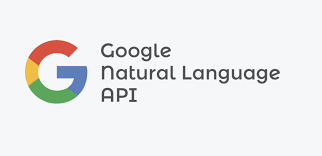
The Google Cloud Natural Language API includes pre-trained text classification, sentiment analysis, and other models. You can utilize AutoML capabilities to create your machine-learning models.
This API uses Google’s language comprehension technology and is ideal for tasks requiring great precision and one of the one of the best natural language processing tools.
KEY FEATURES OF GOOGLE CLOUD NATURAL LANGUAGE
- People, businesses, locations, events, and products are just a few entities that Google Cloud Natural Language can recognize and analyze in text.
- The service offers sentiment analysis to identify whether a text’s general attitude is favorable, negative, or neutral.
- This function enables sentiment analysis for particular items referenced in the text, giving a more in-depth perspective of the sentiment toward various aspects.
- To learn about word dependencies, grammatical relationships, and parts of speech, Google Cloud Natural Language analyzes sentence structure.
- The service benefits content classification tasks by classifying text into established or custom categories.
- Thanks to Google Cloud Natural Language’s support for several languages, users may process and analyze text in many languages.
5. GENSIM
An open-source Python module, GenSim, is used for topic modeling, text similarity detection, document navigation, etc. Since GenSim does not require the entire text file to be uploaded to function, it is an excellent solution for working with enormous volumes of data and is memory efficient. It is also one of the best natural language processing tools.
KEY FEATURES OF GENSIM
- Popular topic modeling methods like Latent Dirichlet Allocation (LDA) and Latent Semantic Indexing (LSI) are effectively implemented by Gensim.
- Word embedding models like Word2Vec, Doc2Vec, and FastText can be trained and used with Gensim, making it easier to create dense vector representations of words or documents.
- Gensim makes it possible to create indexes and similarity measures for documents, which makes it possible to quickly retrieve documents that are similar in content.
- Gensim is suitable for processing large datasets and developing sophisticated models since it is built to scale effectively and manage large corpora.
- The library offers tools for extracting important details and producing summaries from text, which helps in document summarization.
- Assisting with activities like document management and categorization, Gensim enables grouping documents into categories based on their content.
6. WORD2VEC
An NLP tool for word embedding is called Word2Vec. A word is represented as a vector by word embedding. Based on their dictionary definitions, words are transformed into vectors that may be used to train machine learning (ML) models to recognize similarities and differences between words.
KEY FEATURES OF WORD2VEC
- Word2Vec frequently uses hierarchical softmax, a method that utilizes a binary tree structure for vocabulary and speeds up training while reducing computation for large vocabularies.
- By randomly selecting negative instances, negative sampling is a Word2Vec strategy used to mimic the entire softmax, accelerating and enhancing training effectiveness.
- Word2Vec embeddings frequently maintain semantic similarity, which means that words with similar meanings are located closer to one another in the vector space.
- Word2Vec embeddings enable tasks like selecting the word that best completes an analogy in analogical reasoning.
- Word2Vec embeddings enable critical mathematical operations in the vector space, like vector addition and subtraction, enabling word analogies and analogical reasoning.
- Word2Vec can handle extensive vocabularies and corpora without using many processing resources using practical training algorithms like negative sampling.
7. CogCompNLP
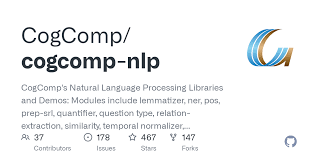
At the University of Pennsylvania, a program called CogCompNLP was created. It is available in Python and Java for text data processing and can be stored locally or remotely.
As one of the best natural language processing tools, it offers features including tokenization, part-of-speech labeling, chunking, lemmatization, and semantic role labeling. Both large data sets and remotely stored data can be processed by it.
KEY FEATURES OF COGCOMPNLP
- The modular architecture lets users choose individual tools or components based on their needs and use cases.
- It allows users to tag words in sentences with the grammatical components of speech.
- CogCompNLP has tools for recognizing named entities in text, including people, organizations, places, and more.
- Provides resources for dependency parsing, a technique for analyzing phrase structure and determining the relationships between words.
- It allows users to label the semantic roles that various words in a sentence play about a predicate.
8. TEXTBLOB
Another open-source Python program that is based on NLTK is TextBlob. Many NLTK functions are included in TextBlob without the complexity. Because of this, beginners should consider it as one of the best natural language processing tools.
It can be used for production applications that don’t have precise algorithmic needs and includes features from Python’s Pattern module.
KEY FEATURES OF TEXTBLOB
- Inexperienced and seasoned developers can use TextBlob’s straightforward and user-friendly API to process text data.
- It has a POS tagger that categorizes the words in a phrase into their appropriate parts of speech, such as nouns, verbs, and adjectives, to make grammatical analysis easier.
- TextBlob enables the extraction of noun phrases from text, giving information on the key components or subjects of the writing.
- It offers models that have already been trained to analyze text sentiment and classify it as either positive, negative, or neutral.
- Users can train and test classification models for numerous categories using TextBlob, which enables text classification tasks.
- The library provides tokenization capabilities, a critical preprocessing step in NLP that involves splitting text into words, sentences, or other meaningful units.
9. AMAZON COMPREHEND
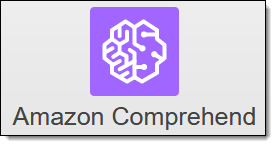
Comprehend is a SaaS offering from Amazon. It provides the user with conclusions based on the study of textual documents. Removing text, essential phrases, sentiment, topics, etc., from papers makes the users’ task of digesting documents easier.
Additionally, it offers model training based on document classification and one of the best natural language processing tools.
KEY FEATURES OF AMAZON COMPREHEND
- Amazon Comprehend may divide the text into established or custom classifications when categorizing material.
- It recognizes and extracts from the text entities like people, companies, places, dates, amounts, and more.
- The program assesses the text’s overall sentiment and categorizes it as positive, negative, neutral, or mixed, giving users insight into the content’s emotional tone.
- Using significant phrases or words from the text, Amazon Comprehend pulls the main ideas and crucial themes, making it easier to comprehend the content.
- The text’s syntax is examined, and part-of-speech tagging, constituent parsing, and dependency parsing are provided.
- The language of the text can be determined by Amazon Comprehend, allowing for analysis and support of several languages.
- The service helps to categorize and organize material by locating and extracting topics or themes from a body of text.
10. MONKEYLEARN
MonkeyLearn is a user-friendly application that uses NLP to help you extract insightful information from your text data. One of the pre-trained models can be used to perform text analysis tasks like sentiment analysis, topic categorization, or keyword extraction as a starting point. You can create a machine learning model suited to your company to get more precise insights.
KEY FEATURES OF MONKEYLEARN
- Text can be categorized into predefined classes or bespoke categories using MonkeyLearn’s text classification features.
- The platform offers sentiment analysis to determine the sentiment (positive, negative, or neutral) represented in a piece of text.
- Using NER models, users may locate and extract identified entities from text, including people, companies, places, etc.
- MonkeyLearn makes it possible to pull out the most essential words and phrases from the text, giving you an understanding of the core ideas.
- It provides language detection to ascertain the language in which the material was written.
- Users can do fine-grained sentiment analysis by linking certain qualities or aspects mentioned in the text with specific attitudes.
- The platform makes it possible to determine the meaning or objective of a text message, which is helpful for chatbot programs and customer support.
11. AYLIEN
Aylien is a SaaS API that analyzes massive amounts of text-based data from sources like academic journals, real-time news material, and social media using deep learning and NLP.
It can be used for various NLP tasks, including sentiment analysis, entity extraction, article extraction, and text summarization and one of the best natural language processing tools.
KEY FEATURES OF AYLIEN
- Aylien provides access to various NLP features, such as sentiment analysis, entity recognition, summarization, language detection, and more, through its robust and user-friendly Text Analysis API.
- It allows users to assess the sentiment or polarity (positive, negative, or neutral) represented in a text, offering insightful information about the content’s emotional tone.
- The NER feature of Aylien locates and extracts identified entities from the text, including people, companies, places, and more.
- It enables the capacity to draw out pertinent ideas and issues from the book, assisting with comprehension of the major themes and subjects covered.
- Users of Aylien can create succinct summaries of lengthy texts, making it more straightforward to understand the major concepts and essential elements.
12. IBM WATSON
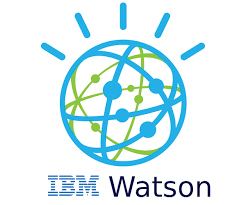
The IBM Cloud houses the IBM Watson portfolio of AI services. Natural Language Understanding is one of its core characteristics, which enables you to recognize and extract keywords, categories, emotions, entities, and more.
It is adaptable because it can be customized for various industries, from healthcare to banking, and it comes with a wealth of papers to get you started.
KEY FEATURES OF IBM WATSON
- Applications can comprehend and interpret human language with the help of text analysis made possible by Watson NLU. This text analysis includes sentiment analysis, entity recognition, and emotion analysis.
- With the help of Watson Discovery, users may extract knowledge from unstructured data, such as papers, PDFs, and web pages. Watson Discovery also offers advanced search and content analytics capabilities.
- Allows for language translation between different languages, enabling multilingual and accessible apps.
- Watson Assistant makes it easier to create conversational interfaces, chatbots, and virtual assistants that interact with users naturally and aid in job completion.
- Enables transcription services, speech-controlled apps, and accessibility features by converting audio and voice to written text.
- Translates written text into natural-sounding audio, enabling the development of voice-activated, interactive interfaces.
FREQUENTLY ASKED QUESTIONS
Which one of the best natural language processing tools and libraries are the most widely used?
NLTK (Natural Language Toolkit), spaCy, Gensim, CoreNLP, TextBlob, Google Cloud Natural Language, Amazon Comprehend, and IBM Watson NLP are well-known NLP tools and libraries. These programs provide many NLP features, ranging from sentiment analysis to tokenization.
How do natural language processing tools employ sentiment analysis?
Finding the sentiment or emotion expressed in a text and classifying it as good, harmful, or neutral is known as sentiment analysis, a frequent NLP task. It is frequently used for many applications to measure public sentiment, client feedback, and social media sentiment.
What are the main natural language processing tools applications?
Sentiment analysis, language translation, named entity recognition, chatbots, speech recognition, text summarization, question-answering, and other uses are only a few of the many uses for NLP. It is widely used in social media analysis, finance, healthcare, and customer service.
CONCLUSION
In conclusion, the crucial discipline of artificial intelligence, natural language processing tools (NLP), aims to make it possible for computers to comprehend, analyze, and produce human language. It is essential for many applications, such as sentiment analysis, language translation, entity recognition, etc.
REFERENCES
Xenostack.com
Monkeylearn.com
RECOMMENDATIONS
25 Highest Paying Programming Languages: Perl, Go & Scala Leads
